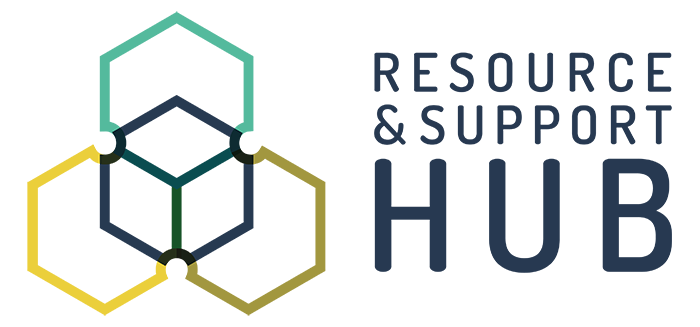
“Where do we start? My organisation does not have much experience or skills relating to safeguarding and protection from sexual exploitation, abuse and sexual harassment, but there are SO many resources out there.”
This is a common question we get asked. So, we have developed a package of “Safeguarding Essentials” for organisations in the humanitarian and development sectors who are starting their safeguarding work. This is designed with civil society organisations (CSOs) in mind and looks specifically at Sexual Exploitation, Abuse and Sexual Harassment (SEAH).
What is safeguarding?
Do you know the difference between the terms “safeguarding” and “Protection from Sexual Exploitation and Abuse” (PSEA)? This infographic provides an explanation of the terms and an introduction to safeguarding. The infographic was developed with colleagues in South Sudan and can be applied across many contexts. There is an accompanying tip sheet if you want to read further.
Policies and Code of Conduct
Why? - It is important for every organisation to have safeguarding policies and procedures in place, including a code of conduct. They help explain why and how organisations, and their staff, keep programme participants and their colleagues safe from harm, including the behaviour expected of staff and volunteers.
This how-to note takes you through the policy development process, starting with what you have in place and the context where you are. An accompanying resource shows you how to create or update your organisation’s code of conduct.
Prevention
Organisation capacity self-assessment
Why? Organisations need to identify what good practices they already have in place, as well as the gaps that need to be addressed.
Do you want to assess your organisation’s safeguarding capacity but don’t know where to start? This organisation capacity self-assessment (OCA) tool supports organisations in assessing their safeguarding capacity and helps them develop action plans to strengthen capacity.
Staff training on safeguarding
Why? Safeguarding is the responsibility of all staff, including those who are not safeguarding specialists. All staff should be inducted and regularly trained on safeguarding, including on the specific safeguarding procedures of their organisation.
Safeguarding Matters is a story-based e-learning course and can be used by all organisations to train their staff on the basics. It can complement organisation-specific training and is relevant for those working in both development and humanitarian settings and is available in English and many other languages.
Safe Recruitment
Why? Hiring staff, volunteers and consultants who are safe to work with others is a key responsibility of any organisation to prevent SEAH.
This how-to note outlines how safeguarding can be integrated into Human Resources (HR) processes. It follows the employee cycle, from onboarding to separation, and clearly outlines the role of HR in ensuring an organisation is safe.
Responsibilities for leaders
Why? The behaviour of an organisation's leader can contribute to a positive organisational culture. Strong leadership and positive role modeling is crucial for successful safeguarding.
This tip sheet was developed by RSH in South Sudan and can be adapted to your context. The note explains why leaders should prioritise safeguarding in their organisation and what their roles and responsibilities are in ensuring quality safeguarding systems.
Procedures to manage risks
Why? Every organisation faces a broad range of safeguarding risks. Detailed risk management is central to an organisation’s safeguarding measures.
This risk management tool was developed by RSH in Nigeria to help organisations identify, assess and mitigate safeguarding risks in their organisations and programmes. It can be adapted to your own context.
Download the risk management tool
Safe programmes
Why? It is every organisation’s responsibility to ensure that their programmes are designed and delivered in a way that will not cause harm to others.
This how-to note details what safe programming is, what needs to be in place to support safe programming, the importance of community engagement and how to integrate safeguarding throughout the programme cycle.
Reporting
Community-based complaints mechanisms (CBCM)
Why? Everyone who participates in a programme, or interacts with your organisation, should have the right to make a complaint easily and freely.
This how-to note, written for organisations working in Tigray in Ethiopia, outlines what a CBCM is and how organisations can set up and manage a CBCM. You can adapt this note to where you are working. For example, on the first page you can share details of local services in your context and outline the characteristics of the community that you are working with.
Response
Responding to a report of SEAH
Why? Staff need to know how to appropriately handle a safeguarding report of SEAH. Mismanagement of a report could result in further harm to the person making the report or others.
This infographic outlines an appropriate response to a report and explains what a survivor centered approach is and why it is so important.
Case handling
Why? It’s important for organisations to know how to manage reported cases of SEAH sensitively, confidentially and without discrimination. Case handling is the process that organisations go through once they receive a report relating to safeguarding.
This flow chart was developed by RSH in Nigeria but it can be adapted and used for your context. The flow chart considers how to respond to cases directly related to personnel or funding from your organisation, and how to respond to cases of abuse within the community that are not directly linked to your organisation.
Managing safeguarding investigations
Why? Organisations need to manage investigations confidentially and efficiently to ensure safe and swift outcomes.
This note outlines how you can prepare for and manage safeguarding investigations. It does not include information on how to carry out investigations. If you want help with investigations, you can search the RSH Consultants Directory for Investigators in your region.
This package is based on the global standards on SEAH (click here to read more on the standards). The package includes the most essential safeguarding measures that organisations should have in place. The Safeguarding Journey expands on this package and provides additional measures to include in your organisational safeguarding system.
We are not starting from nowhere
Many organisations have skills, knowledge and expertise that can help protect their staff and the people they interact with from SEAH, and other forms of harm in their context. Your organisation may already have informal systems or approaches in place. This package aims to help you formalise, organise or strengthen your safeguarding procedures.
Disability-inclusive safeguarding
Certain people are at higher risk of SEAH, for example women and girls, persons with disabilities and people who face other types of discrimination due to their nationality, ethnicity, sexual orientation or other reasons. These two pocket guides outline how you can put in place disability-inclusive safeguarding measures in programmes and in the workplace.
Measuring your safeguarding efforts
Are you using some of these tools and want to know if they are actually working and making a difference in your organisation?
You can monitor your safeguarding work in line with the CHS PSEAH Index. The PSEAH Index identifies what individuals and organisations can do to protect programme participants and service users from SEAH. This free one hour course developed by the CHS Alliance helps you better understand and use the CHS PSEAH Index to integrate measures to better prevent and respond to SEAH in your organisation.





 Low bandwidth on|off
Low bandwidth on|off